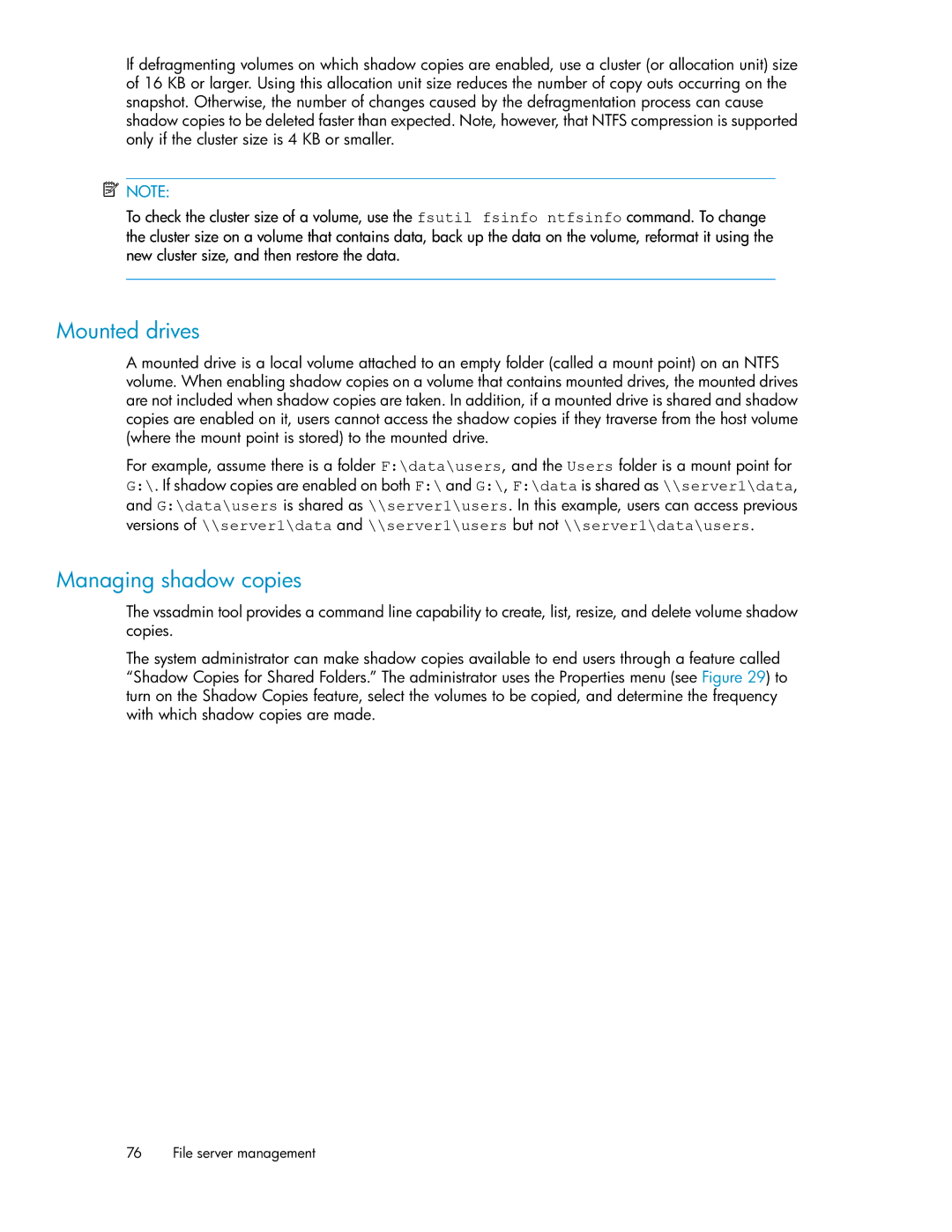
If defragmenting volumes on which shadow copies are enabled, use a cluster (or allocation unit) size of 16 KB or larger. Using this allocation unit size reduces the number of copy outs occurring on the snapshot. Otherwise, the number of changes caused by the defragmentation process can cause shadow copies to be deleted faster than expected. Note, however, that NTFS compression is supported only if the cluster size is 4 KB or smaller.
![]() NOTE:
NOTE:
To check the cluster size of a volume, use the fsutil fsinfo ntfsinfo command. To change the cluster size on a volume that contains data, back up the data on the volume, reformat it using the new cluster size, and then restore the data.
Mounted drives
A mounted drive is a local volume attached to an empty folder (called a mount point) on an NTFS volume. When enabling shadow copies on a volume that contains mounted drives, the mounted drives are not included when shadow copies are taken. In addition, if a mounted drive is shared and shadow copies are enabled on it, users cannot access the shadow copies if they traverse from the host volume (where the mount point is stored) to the mounted drive.
For example, assume there is a folder F:\data\users, and the Users folder is a mount point for G:\. If shadow copies are enabled on both F:\ and G:\, F:\data is shared as \\server1\data, and G:\data\users is shared as \\server1\users. In this example, users can access previous versions of \\server1\data and \\server1\users but not \\server1\data\users.
Managing shadow copies
The vssadmin tool provides a command line capability to create, list, resize, and delete volume shadow copies.
The system administrator can make shadow copies available to end users through a feature called “Shadow Copies for Shared Folders.” The administrator uses the Properties menu (see Figure 29) to turn on the Shadow Copies feature, select the volumes to be copied, and determine the frequency with which shadow copies are made.
76 File server management
